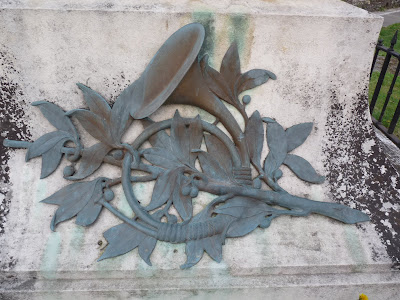 It rained off and on all day long, sunshine, then hard rain, a cycle every half hour or so. You can watch them pour in from downstream, from Fumel, the storm clouds. So when Robert showed up, he decided to set up a welding shop indoors. But first Robert had to drive to Fumel to report in to his parole officer. I took the opportunity to bone up in Wikipedia about concrete, rebar and welding. I watched hilarious UTube welding episodes where a guy with a big gut and probably a big heart sincerely described welding, using terms like puddle and spatter and scratching that meant little to a virgin like me. Then he pulled down his welding helmet, the screen exploded with the supernova of an arc welder, and the teacher mumbled incomprehensibly from behind his helmet, drowned out by the zapping of the arc welder.
It rained off and on all day long, sunshine, then hard rain, a cycle every half hour or so. You can watch them pour in from downstream, from Fumel, the storm clouds. So when Robert showed up, he decided to set up a welding shop indoors. But first Robert had to drive to Fumel to report in to his parole officer. I took the opportunity to bone up in Wikipedia about concrete, rebar and welding. I watched hilarious UTube welding episodes where a guy with a big gut and probably a big heart sincerely described welding, using terms like puddle and spatter and scratching that meant little to a virgin like me. Then he pulled down his welding helmet, the screen exploded with the supernova of an arc welder, and the teacher mumbled incomprehensibly from behind his helmet, drowned out by the zapping of the arc welder. First we used another of Robert's incredibly specialized machines to bend hooks at either end of the short rebar sections.



These will serve to hold the rebar even with the middle of the thickness of the concrete. Wikipedia told me that rebar is wonderful when planted deeply inside concrete: it expands and contracts with temperature just like concrete does and better yet, the lime in concrete reacts with the steel to form a corrosion resistant film. At least that's what I remember.
Then it was time to weld the shorter hooked pieces at 8" intervals to the longer pieces to form a grille. Robert sought the advice of Christien, a mechanical engineer who works at the junkyard, Mas Moury. He recommended two layers of welded mesh, perfectly spaced within the thickness of a 4" slab of concrete. Neither Robert nor I could think of a decent way to keep the two layers perfectly spaced while pouring cement on them and probably walking on them as well. I imagined yanking them up constantly and relying really on dumb luck. This rebar is 10mm (3/8") and much stiffer than mesh.

I had actually checked that this whole grill would make it out of the door, even if at a diagonal.


Here's about how it looks at the moment under the tarp. It's raining like crazy and the tarp is getting little wholes in it from being pulled on and off so many times. Lots of water is dripping into the bathroom below. Now all I need to do is finish the forming in front. And pray for clear weather.











































